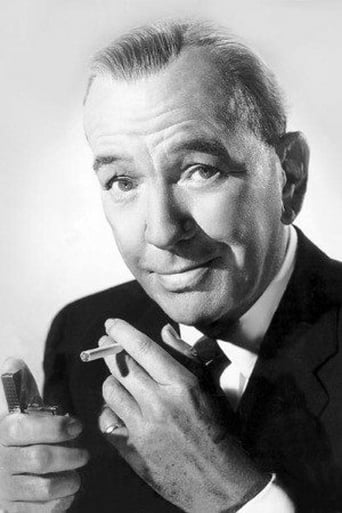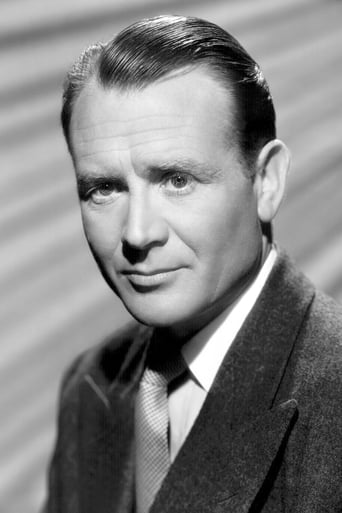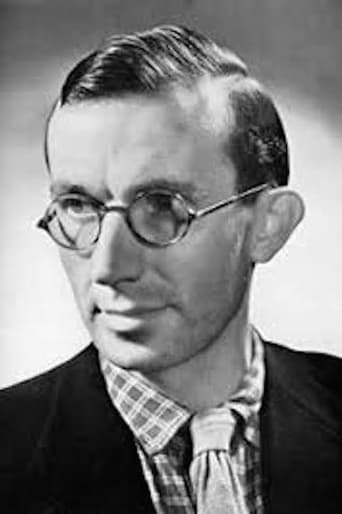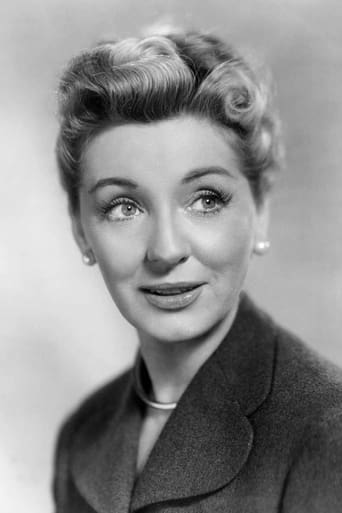Stometer
Save your money for something good and enjoyable
NekoHomey
Purely Joyful Movie!
Adeel Hail
Unshakable, witty and deeply felt, the film will be paying emotional dividends for a long, long time.
Kaelan Mccaffrey
Like the great film, it's made with a great deal of visible affection both in front of and behind the camera.
JohnHowardReid
A Two Cities Film. A Noel Coward Production. Presented and released in the U.K. through United Artists. New York opening at the Capitol: 23 December 1942. U.S. release: 12 February 1943. Australian release through G-B-D: 24 June 1943. 12 reels. 10,496 feet. 116½ minutes.SYNOPSIS: "This is the story of a ship." A brief, documentary ship-building sequence is followed by an introduction to the crew, principally represented by the Captain, the Chief Petty Officer and an Able Seaman.NOTES: Nominated for the following Academy Awards: Best Picture (dipped out to Casablanca); Best Original Screenplay (lost to Norman Krasna's Princess O'Rourke, would you believe?). However Noel Coward was voted a Special Award "for his outstanding production achievement".In Which We Serve was selected by both the New York Film Critics and the National Board of Review as the Best Picture of 1942.COMMENT: In Which We Serve may seem dated and old-hat to those young enough to have no recollection of World War 2, but to we who survived, it remains a memorable experience. The plot is cleverly constructed and comes across with all its original impact thanks to the skilled playing of a most credible group of actors. Coward himself never gave a more forceful performance, and he is ably supported by Mills and Miles. The interwoven stories of these characters and their families are the principal concern of In Which We Serve, but the film is laid against such a broadly inspiring canvas that a whole host of lesser if equally realistic portraits are tellingly brought to life by players like Richard Attenborough (a deserter), James Donald (a disillusioned doctor) and Michael Wilding (who can be glimpsed now and again exchanging his usual pleasantries with the skipper).Their women, headed by Celia Johnson, are as remote from the synthetic glamour of Hollywood as newspaper headlines from the world of Mills & Boon. Who could forget determined Joyce Carey, complaining Dora Gregory and fidgeting Kay Walsh in the air raid scene?It is easy to appropriate the direction between Coward and Lean. No doubt both men were equally supportive: Coward concentrating on the players, while Lean handled camera placement and compositions. Lean occasionally uses an opportunity to show off his skill as a former editor with some fast cutting, but generally the directors try to be as unobtrusive as possible, letting the drama speak for itself. It's a story of heroism, of the irrepressible power of the human spirit, of ordinary people reacting heroically and rising above the most harrowing events. It's a story of conquest, of power, of strength, of unity. Fancy direction would lessen its effect. The camera only moves (as in the long, slow tracking shot along the line of weary faces at the wharf) when the moment positively demands it.Production values are first class. The sets loom appro¬priately large or realistically drab, peopled with hordes of scurrying extras or just two or three embattled players. The action scenes are powerful in detail, thanks to skilled special effects. And Coward's own music score provides a telling commentary (aided by the deft introduction of such popular songs as "Roll Out the Barrel" and "Good King Wenceslaus").OTHER VIEWS: A dated yarn, using a format that has been employed time and time again in similar war pictures. The plot is old-hat and the dialogue with its injunctions to "keep a stiff upper lip", its talk about "a spot of leave" and its numerous "jolly fine" shows is impossibly stilted and clichéd. What is worse, the characters are an uninteresting and inanimate lot of one-dimensional, pasteboard figures. There are few perform¬ances - Joyce Carey's is the most memorable exception - that fire the interest. Coward is his usual wooden, unemotional self and this type of underplaying - due no doubt to Coward's direction - has infected the rest of the cast; though Sir Noel has not quite succeeded in putting down the irrepressible John Mills who battles gamely to make his portrait of life in the lower ranks seem convincing. That Mills is not wholly successful in this laudable aim is not his fault (nor the fault of director Lean and photographer Neame who have conjured up some sparkling images) but Coward's. - JHR writing as George Addison.
Martin Bradley
David Lean and Noel Coward co-directed "In Which We Serve" which, we are told, is 'the story of a ship' and which begins in fine documentary fashion before getting down to the serious business of jingoism and what Coward could do to help the war effort, (remember this was only 1942 and the War was still at its height). It is, of course, incredibly British, ('cocoa, sir), and with nary a quiver of its stiff upper lip but it's also deeply moving and beautifully made, a classic in fact, with some splendidly realistic action sequences, (Ronald Neame's superb cinematography must take a lot of the credit).Coward produced the picture, wrote it, composed the score as well as co-directing and taking the lead and the Academy thought enough of him to give him an honory Oscar. As an actor he was very much of the old school, but you can't fault him for sincerity and his 'big' moments are genuinely touching while Celia Johnson, John Mills, Bernard Miles, Richard Attenborough, Joyce Carey, Kay Walsh and Kathleen Harrison are all outstanding. At a time when American entries to the war effort were largely ham-fisted affairs, ("Mrs Miniver, anyone), this is refreshingly forthright, honest and intelligent.
matttaylor-65065
This movie is all about the HMS Torrin, its story its told my its crew members in a flashback style whilst they wait to be rescued in the Mediterranean Sea post sinking of the ship.This was a big deal for Noel Coward because he had three roles, producer, writer and co-director. He shared the role of director with David Lean. This film may be some 70 years old but it is just as good today as it was then. The scripting shows its age with some of the dialogue used but because of a strong performance from a stand out cast this saves the film in my opinion. This film was a debut performance for Richard Attenborough. Some people might think that its portrayal of life in the Royal Navy during wartime is a little bit over embellished we should keep in mind that in 1942 there was no sign of victory over Germany. I am sure that it served as a moral booster for those serving. Its done well to last 70 years and remain a good solid movie.
Steffi_P
The 1940s were a golden age in British cinema. Not only did the circumstances of the war bring interest (and therefore revenue) from the American market, but the earnest need to create morale-boosters lead to government emphasis on film-making, pushing to the fore many of the creative talents that had been fermenting during the 1930s. One such talent was David Lean who was here brought on as co-director alongside writer Noel Coward, although reportedly Coward soon took a back seat, and the picture is around three-quarters the work of Lean.But let's look at Coward first, seeing as it's his story. Certain press critics had ridiculed the idea of this writer of gentle comedies doing a war film. However, pictures of any genre rely upon great characterisation. Coward's characters tended to be stereotypes, summations of types of people in society, and yet they were always affectionate ones. This is of course great for a propaganda piece, where the characters must be recognisable even if they are not believable, and above all sympathetic. In Which We Serve is also a sprawling ensemble piece, with numerous interwoven narratives, and to make it comprehensible and engaging it needs well-defined characters whom the audience can immediately get to grips with, and cannot be mistaken for one another.Lean was already known in the British film industry as the best editor in town, and his work on such important British films as Pygmalion and 49th Parallel show his taste for "hard" cuts which jolt the audience with a sudden change in focus or pace, for example cutting to a moving object. Now that he's behind the camera he continues to use the element of surprise to keep the picture moving, although he finds ways to do it within the shot. For example in the montages of the ship being readied for battle he has the shells sliding towards the camera as they are loaded, giving the montage a sense of dynamic urgency. When John Mills gets the letter saying his wife had the baby, he suddenly leaps towards the camera, so he is in a close-up when he reads it out. This method of attention grabbing is crucial to Lean's style, and is responsible for some of the most iconic and memorable moments in his later pictures.But what is great about Lean is that he never allows these jolts to make us aware of technique. These sudden moments are always within conventional cinematic style, and keep us in the film's world, as oppose to say the quick zooms of Kubrick or the prowling camera of Hitchcock, which remind us too much of the film's artifice. Lean also has the sense to slow things down for the more dramatic scenes, and lets many of the more poignant moments play out in single uninterrupted shots, to great effect. We also see an intelligent approach to the introduction and presentation of characters. For example in Bernard Miles' first flashback, Miles is continually shown in profile to one side of the screen, while his wife faces the camera at screen centre. This focuses us on her, since we already know his character.Coward and Lean also had access to the cream of British acting talent. Coward himself plays the ship's captain, another thing idea the papers scoffed at before they saw it, after which they were surely scoffing on the other side of their faces, as his performance is flawless. John Mills is also great, and Bernard Miles really gets to act. Richard Attenborough is at his best in his screen debut, although it went uncredited due to a balls-up with the cast list. Best of the bunch however is Celia Johnson, a completely natural performer, capable of making us forget we are watching an actress and believing we are witnessing the life of a real person.As a morale-booster, In Which We Serve was popular and effective, but it was also part of an upward trend in the scope and prestige of the British motion picture. Lean's dynamic style would eventually earn him respect on both sides of the Atlantic. His ability to keep the picture constantly visually engaging would create great cinema out of potentially static stage play adaptations and, later on, lengthy historical epics that might have been tedious in other hands.





